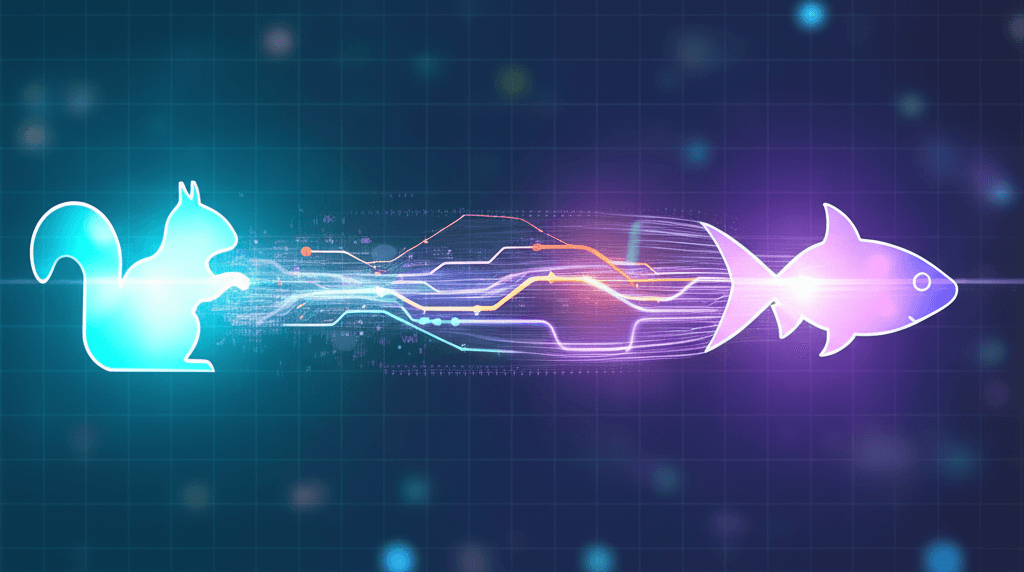Midjourney Launches New Video Control: Craft Seamless Loops and Morphs
Midjourney's latest update grants users precise control to craft seamless video loops and stunning morphing transitions.
July 26, 2025

Midjourney, a prominent player in the AI image generation space, has significantly expanded its capabilities by introducing new features for its video generation model. Users can now specify custom start and end images, enabling the creation of seamless video loops and smooth, morphing transitions between two distinct visuals. This development marks a notable step forward in the platform's evolution towards more sophisticated and controllable AI-driven content creation, positioning it as a stronger competitor in the rapidly growing field of generative video.
The core of this update lies in the ability to dictate the initial and final frames of a generated video clip.[1][2] This empowers creators with a much higher degree of narrative and visual control. For instance, a user can now generate a video that begins with an image of a squirrel and concludes with an image of a goldfish, with the AI generating the transitional frames in between.[2] Another key application is the creation of perfectly looping videos, where the start and end frames are identical, a feature particularly useful for creating animated idle animations or seamless background visuals.[3][2] This functionality is accessible through new parameters, likely `--simg` for the start image and `--eimg` for the end image, which will be added to the user's prompt. The feature is available through the Midjourney bot on Discord, a familiar interface for its user base.[2] This builds upon the initial image-to-video functionality released in June 2025, which allowed users to animate a single image with either automatic or manual motion prompts.[4][5]
Midjourney's foray into video began with the release of its V1 video model, which initially focused on an image-to-video workflow.[6][5] Users could take any image, whether generated within Midjourney or uploaded externally, and animate it into a short, five-second video.[3][5] The platform provides options for "low motion" for subtle, ambient movements and "high motion" for more dynamic scenes, though the latter can sometimes result in "wonky mistakes."[3][4][7] These initial five-second clips can be extended up to four times, resulting in a maximum video length of approximately 21 seconds.[3][8] Each video generation job produces four different video options, giving users a variety of interpretations to choose from.[8] While the video generation is accessible to all paid subscribers, starting from the $10 per month Basic plan, it consumes GPU time at a rate eight times higher than image generation.[3][7] Pro and Mega plan subscribers have the added benefit of using "Relax Mode" for video generation, which does not deplete their fast GPU hours.[3]
The introduction of custom start and end frames is part of Midjourney's broader strategy to build a comprehensive and powerful creative suite. The company's long-term vision extends beyond simple image and video generation to real-time, interactive open-world simulations.[4] This ambitious goal requires the development of several interconnected components: visual models for generating images, video models for adding motion, 3D models for spatial navigation, and real-time models for immediate interaction.[4] The recent updates to its video model are a crucial building block in this long-term plan. The company is also working on a video upscaler to improve the current 480p output resolution and has indicated that future updates will continue to enhance video quality and control.[9][10] These developments are happening alongside continuous improvements to its core image generation models, with version 7 already offering better photorealism and prompt understanding, and version 8 in the works.[11][12]
The implications of Midjourney's advancements in AI video are significant for both individual creators and the wider creative industry. By making sophisticated video generation more accessible and affordable, Midjourney is democratizing tools that were once the exclusive domain of high-end production studios.[8][13] This could empower a new wave of independent artists, filmmakers, and marketers to produce high-quality visual content.[8][6] However, this rapid progress also raises familiar concerns about the impact on traditional creative jobs and the potential for misuse, such as the creation of deepfakes or disinformation.[14][13] The ease with which seamless and transformative videos can now be created underscores the growing need for robust ethical guidelines and public awareness regarding AI-generated media. As Midjourney and its competitors like OpenAI's Sora and Google's Veo continue to push the boundaries of what's possible, the creative landscape is set for a period of profound and rapid transformation.[6][7]
Sources
[2]
[5]
[6]
[7]
[8]
[9]
[11]
[12]
[13]
[14]